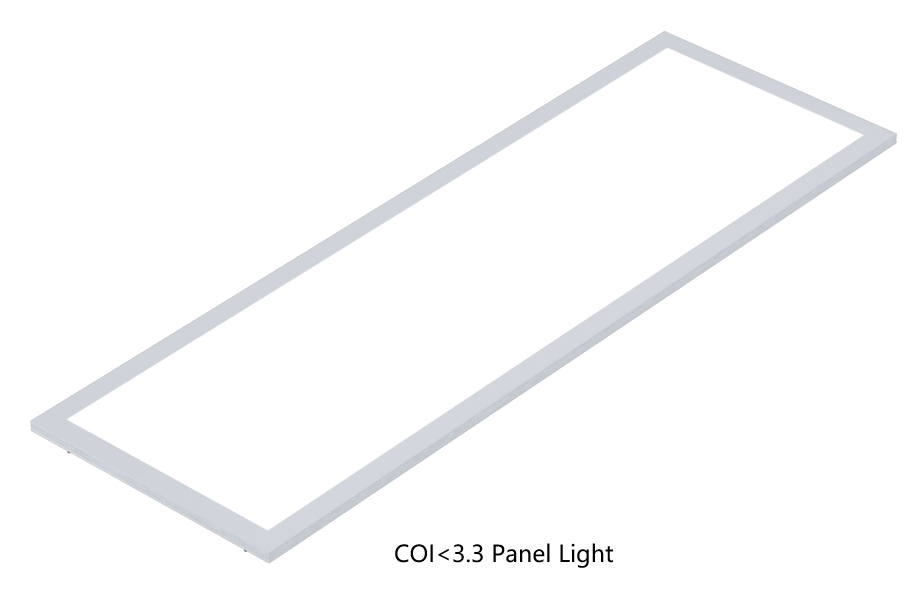Importance of Lighting in Medical Settings
Certain indoor environments present unique lighting requirements, for example, in medical facilities such as patient examination rooms and operating theaters. Light in a surgical operating room must ensure that surgeons can discern fine gradations of red tones to differentiate tissues, blood, and bodily structures.
In examination rooms, such as in the emergency department, clinicians must check eyes, skin tone, and organ color. Color can reveal infection, poor circulation, jaundice, and other key diagnostic information. Lighting for this environment requires a balance of color temperature and CRI. Natural light can be key to showing real color. Optimal lighting supports speed and accuracy in diagnosis and treatment.
Proper lighting also enhances non-clinical and non-surgical spaces. Lighting with a “warm” CCT in waiting rooms or in residential facilities such as nursing homes provides visual comfort to staff and patients, and to visiting friends and family. Light source CCT has also been shown to affect patient sleep and mood, factors that can promote healing and well-being (refer to the White Paper: Lighting for Health: Human-Centric Lighting for more on this topic).
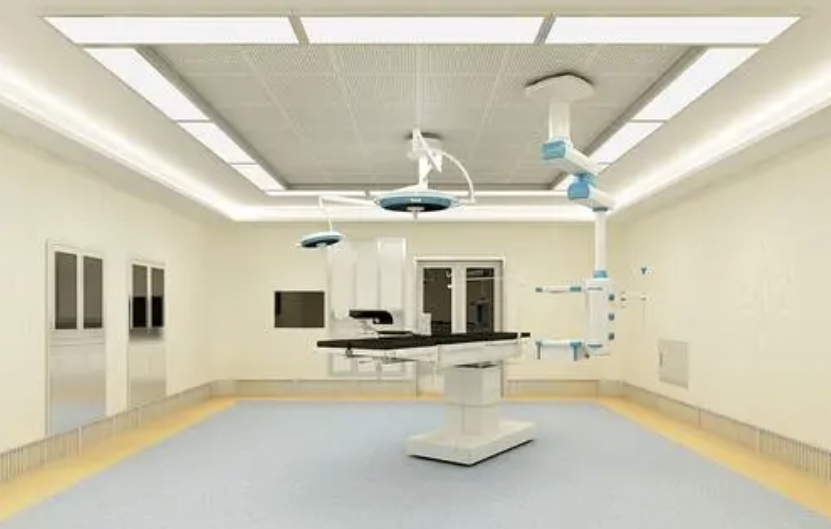
Lighting Level or Illuminance
Illuminance describes light emitted by a source, measured by the amount of light that falls on a plane. It is measured lumens per square meter, also referred to as lux. In a medical facility it is particularly important to have sufficient illuminance of work surfaces and treatment areas to ensure clinicians can perform tasks accurately.
Specific benefits include reducing errors when medical teams perform complex tasks and dispense medicates. Lighting levels also support the visually impaired. Illuminance supports better sleep, which enhances healing. It can even lessen agitation and ease pain.
Illuminance is also crucial to maintaining a high degree of safety from physical and other dangers. Medical facility lighting must provide sufficient brightness (lux) to illuminate corridors and other functional areas.
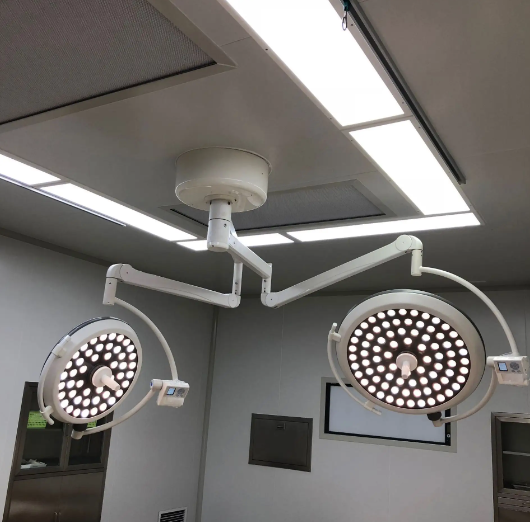
Lighting Standards
The Illuminating Engineering Society of North America (IESNA) provides specific guidelines on Lighting for Hospitals and Healthcare Facilities. This publication includes the recommended lux levels for every type of space in medical facilities. These guidelines have become widely referenced for State and other healthcare lighting standards and regulatory requirements.
Configuring Optimal Medical Lighting Using CCT and CRI
CCT – The best light temperature for clinical settings where patients are being examined or observed is between 4000 K to 4500 K or higher. However, different temperatures and colors can highlight different conditions in the patient. For example, lighting at 3500 K highlights red and yellow tones. Whereas lighting around 5000 K—close to a daylight tone—is particularly comfortable to the human eye and may be better suited to long surgeries.
CRI – Color rendition is important in clinical environments, none more so that in the operating room. Surgical lighting is best at CRI values between 90 and 100, which provides high color fidelity. CRI is typically reported as an average value (Ra) that indicates a light source’s overall rendition accuracy for a group of standard color samples (labeled with R numbers). Clinical lighting should have a high value for the red R9 sample, indicating accurate rendition of red tones, which is critical for distinguishing tissues and organs.
Diagnosis, laboratory, and surgical and treatment areas should have lighting with CRI of 90+. Non-clinical and non-surgical areas may have CRI of 80+. All luminaires in a single area should have the same CRI values.
Additional Medical Lighting Consideration: The Cyanosis Index (COI)
An alternative approach to assessing clinical lighting is the Cyanosis Index (COI). Cyanosis is a bluish discoloration of the skin and mucous membranes. The condition indicates poor circulation or low oxygen levels in the red blood cells. It is usually a sign of an underlying condition that requires medical treatment. Thus, lighting in a clinic or hospital must render flesh tones accurately to easily detect conditions.
The Cyanosis Observation Index (COI) has been established in Australia and New Zealand as a guideline, described in the AS/NZS 1680.2.5:2018 standard. To be considered ‘Cyanosis Compliant’ a medical examination light should have:
- COI of 3.3 or less, which is calculated as the average difference divided by the deviation of appearance between a test light source when illuminating two blood types (100% oxygenated, 50% oxygenated) compared with a 4000K reference illuminant. Lower is better.
- A CCT between 3300 K and 5300 K
- A CRI of >80
The table below shows selected COI ratings for Luminus white LEDs.
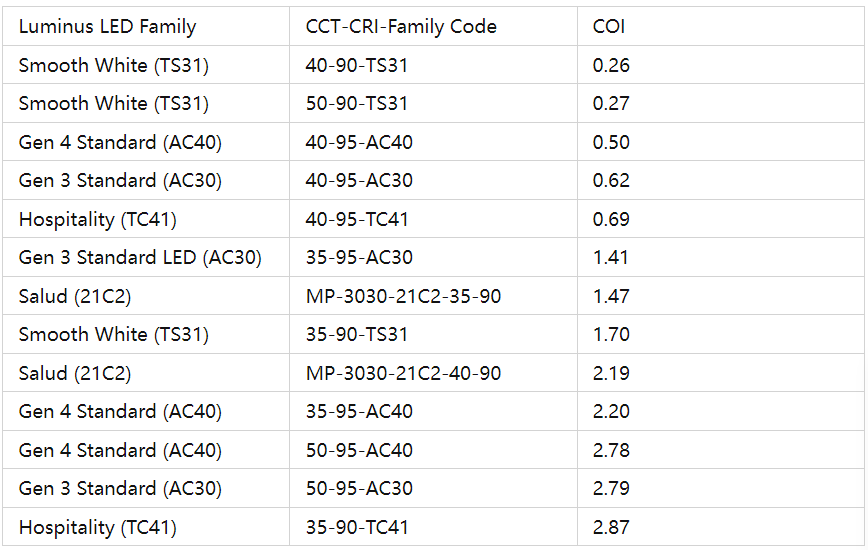
What is cyanosis?
Cyanosis is a medical term that refers to the blue/purple turning of the skin and/or membranes. This indicates low oxygen saturation in the tissues near the skin/membrane. As such, it is a visual manifestation of a range of underlying heart or respiratory problems and is a symptom that medical professionals are trained to look for.
How does lighting help?
Because cyanosis is a visual cue of medical symptoms based on observable colors, lighting conditions and light quality play an important role in its visual detection. The detection of “bluing” of the skin depends largely on the accurate reproduction of “normal” skin tone and blue hue, so it is especially important to consider the light chromatogram (as well as the color rendering index) factor when developing lighting designs.
Lighting design considerations
AS/NZS 1680.2.5 Interior Lighting Part 2.5: Hospitals and Medical Tasks (AS/NZS 1680.2.5 Interior Lighting Part 2.5: Article 7.2 of Hospital and Medical Tasks specifies the characteristics of light sources to be used under visual conditions suitable for the detection of cyanosis.
Cyanosis observation index
Appendix G of AS/NZS 1680.2.5 specifies the calculation procedure for determining the cyanosis Observation Index (COI) of a light source.
This principle is based on the calculated magnitude of the change in the color appearance of both fully oxygenated blood (100% oxygen saturation) and oxygen-reduced blood (50% oxygen saturation blue-purple blood) when the light source is illuminated compared to a 4000K reference light source. Provide spectral reflectance data for oxygenated and cyanated blood, multiplied by spectral distribution data for considered light sources. The color computed in the CIE Lab* space and compared with a 4000K reference light source gives a cyanosis Observation Index (COI) value. The lower the COI value, the smaller the change in color appearance under the light source under consideration.
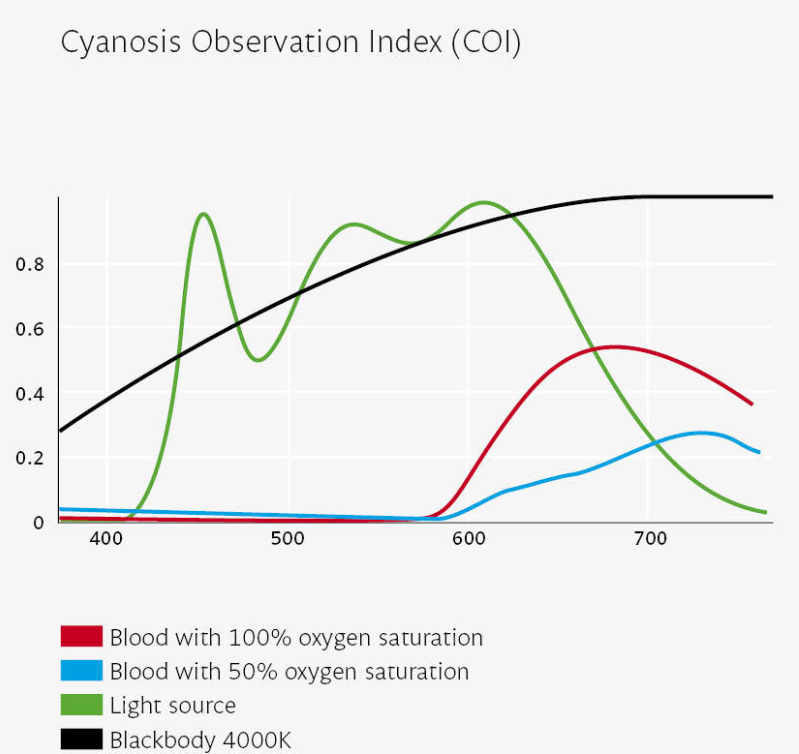
Reference AS/NZS 1680.2.5 Indoor lighting Part 2.5: Hospital and Medical tasks (AS/NZS 1680.2.5 Indoor Lighting Part 2.5: Hospital and medical tasks)
Article 7.2 of this standard specifies the characteristics of light sources to be used under visual conditions suitable for the detection of cyanosis.
1, the relative color temperature (CCT) of the light source should be between 3300 and 5300K
2. Cyanosis observation index (COI) should not be greater than 3.3
The principle is based on the calculated magnitude of the change in color appearance of both oxygenated blood (100% oxygen saturation) and hypoxic blood (50% oxygen saturation blue-purple blood) when illuminated by a light source compared to a 4000K reference light source.
Spectral reflection data for oxygenated and cyanated blood is provided, multiplied by the spectral distribution of the light source under consideration – in the spectral range 380-780nm with a step size of 5nm.
The color is calculated in the CIE Lab* space and compared with a 4000K reference light source to obtain a cyanosis Observation Index (COI) value. The lower the COI value, the smaller the change in color appearance under the considered light source.
COI<3.3 Panel Light at Olam Lighting
Our edge-lit panel lights use COI standard light source (SMD LED), the whole lamp COI value is less than 3.3, if you want to know more about this product, please contact us
